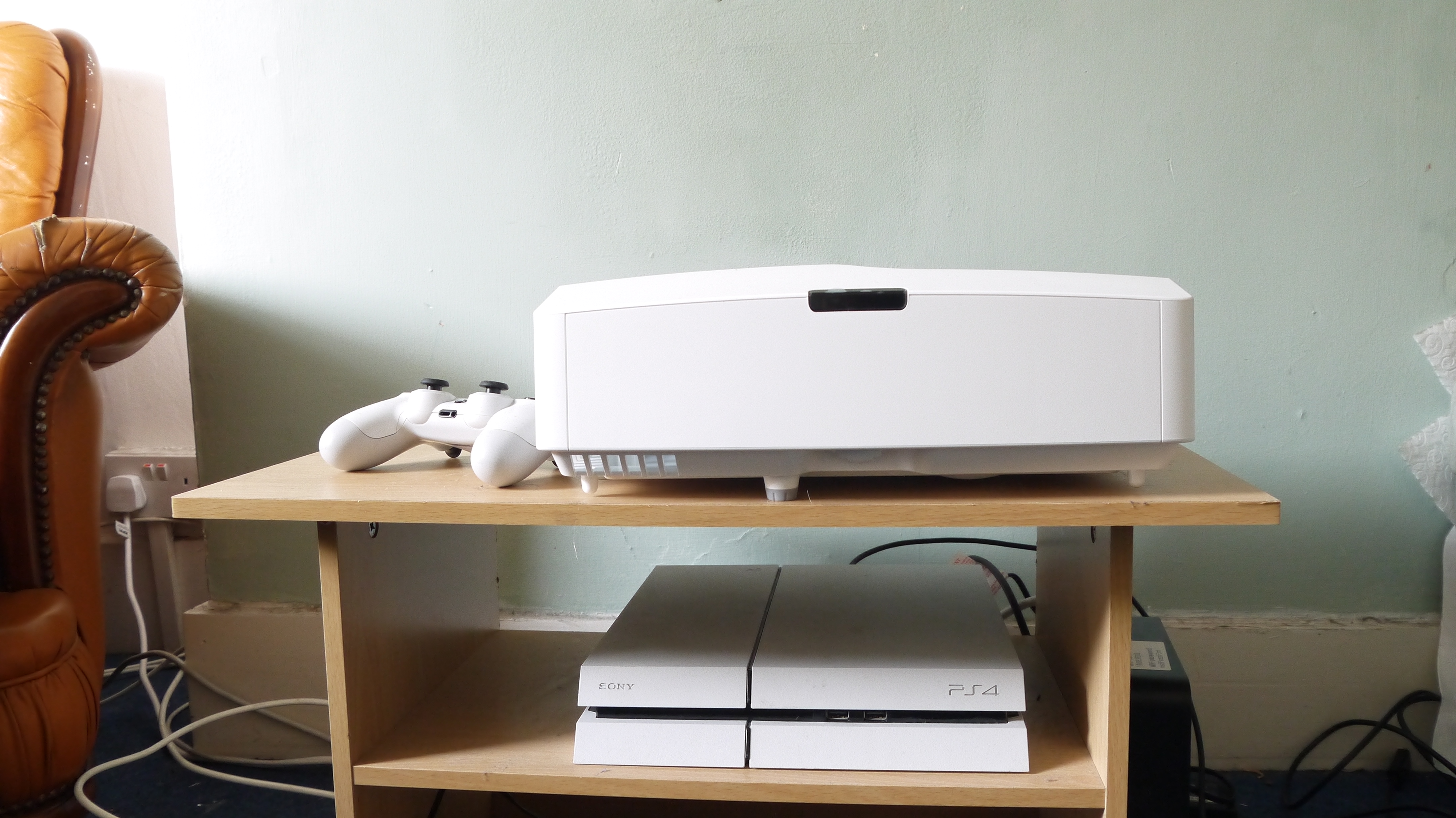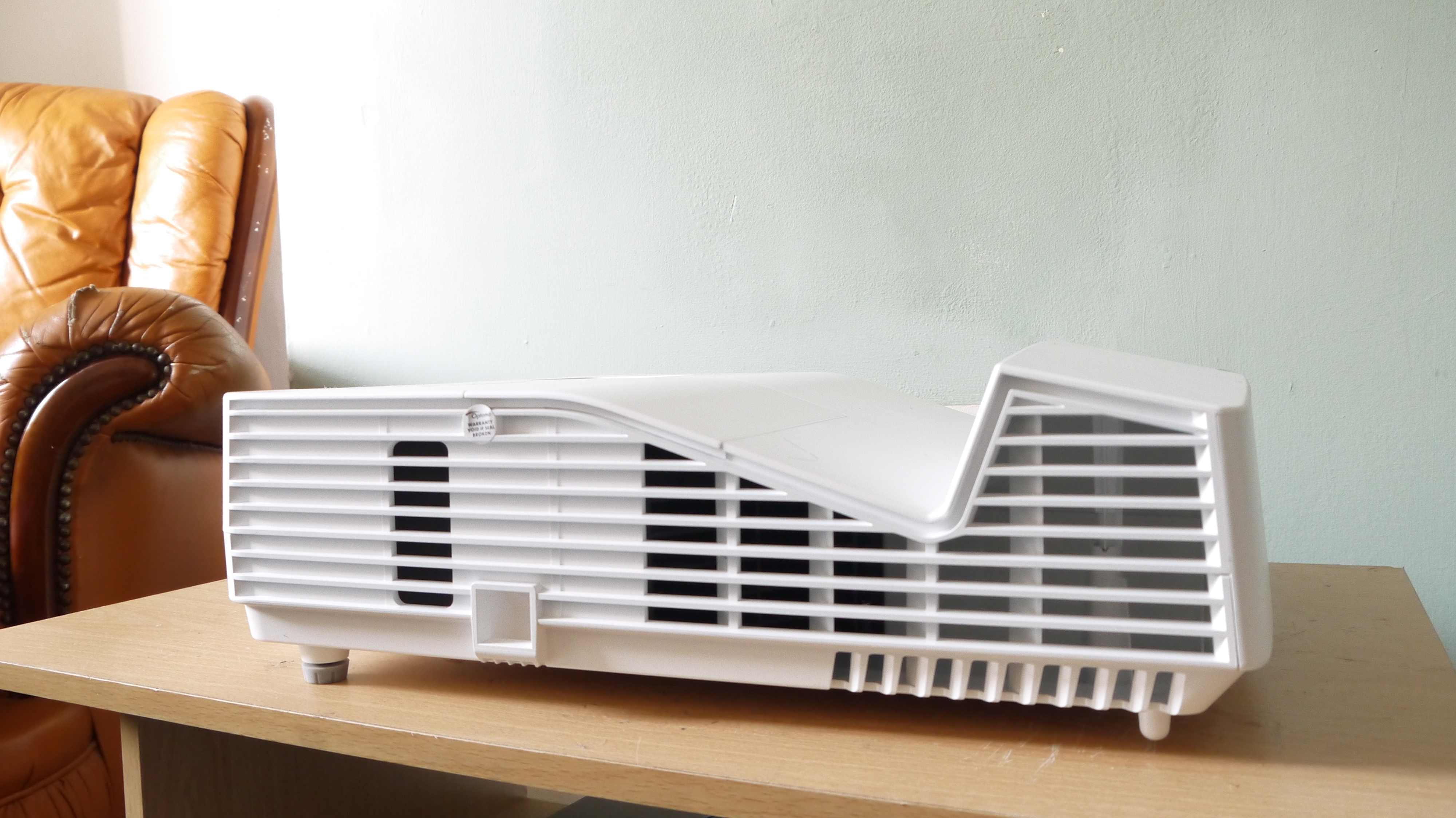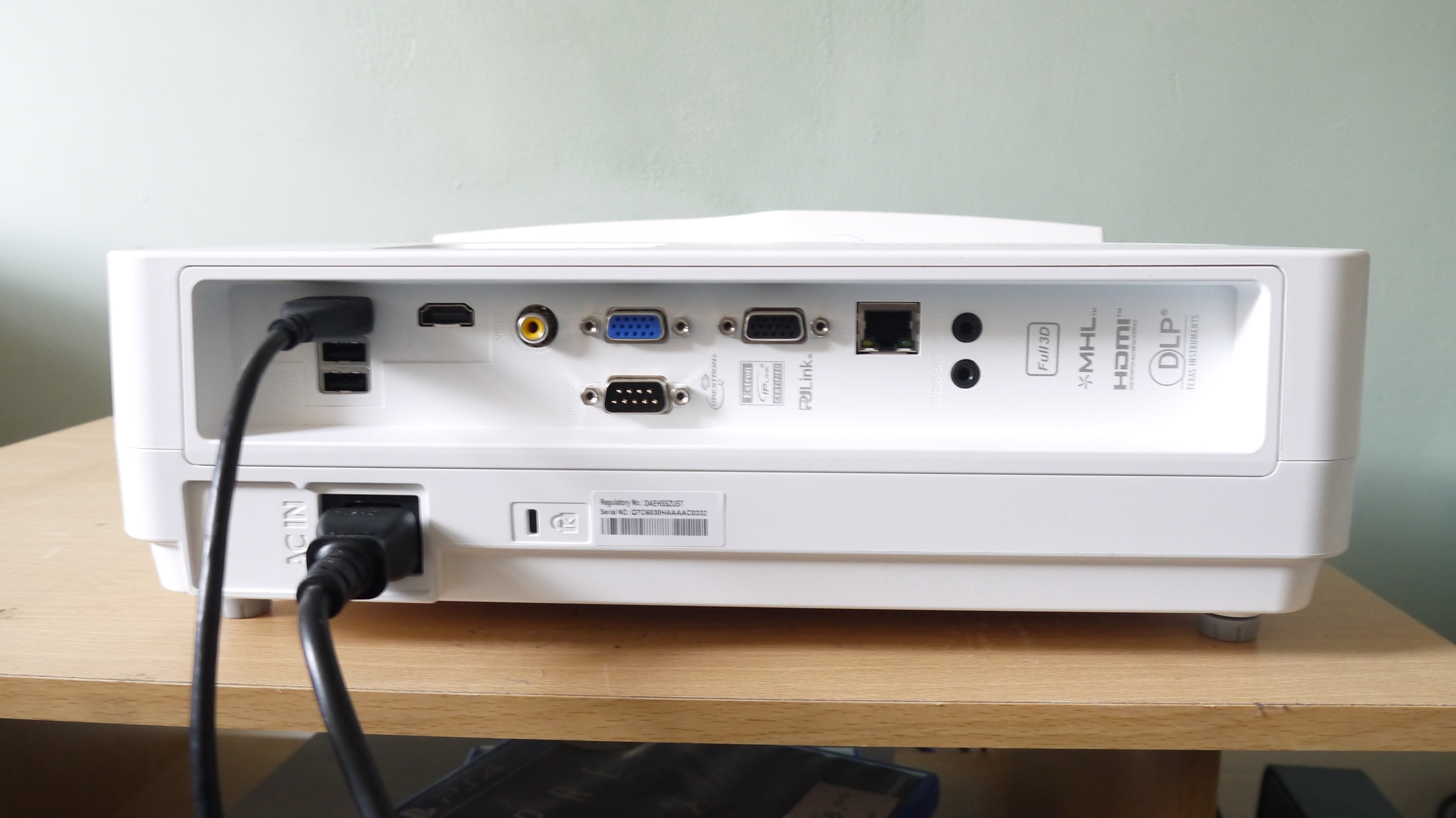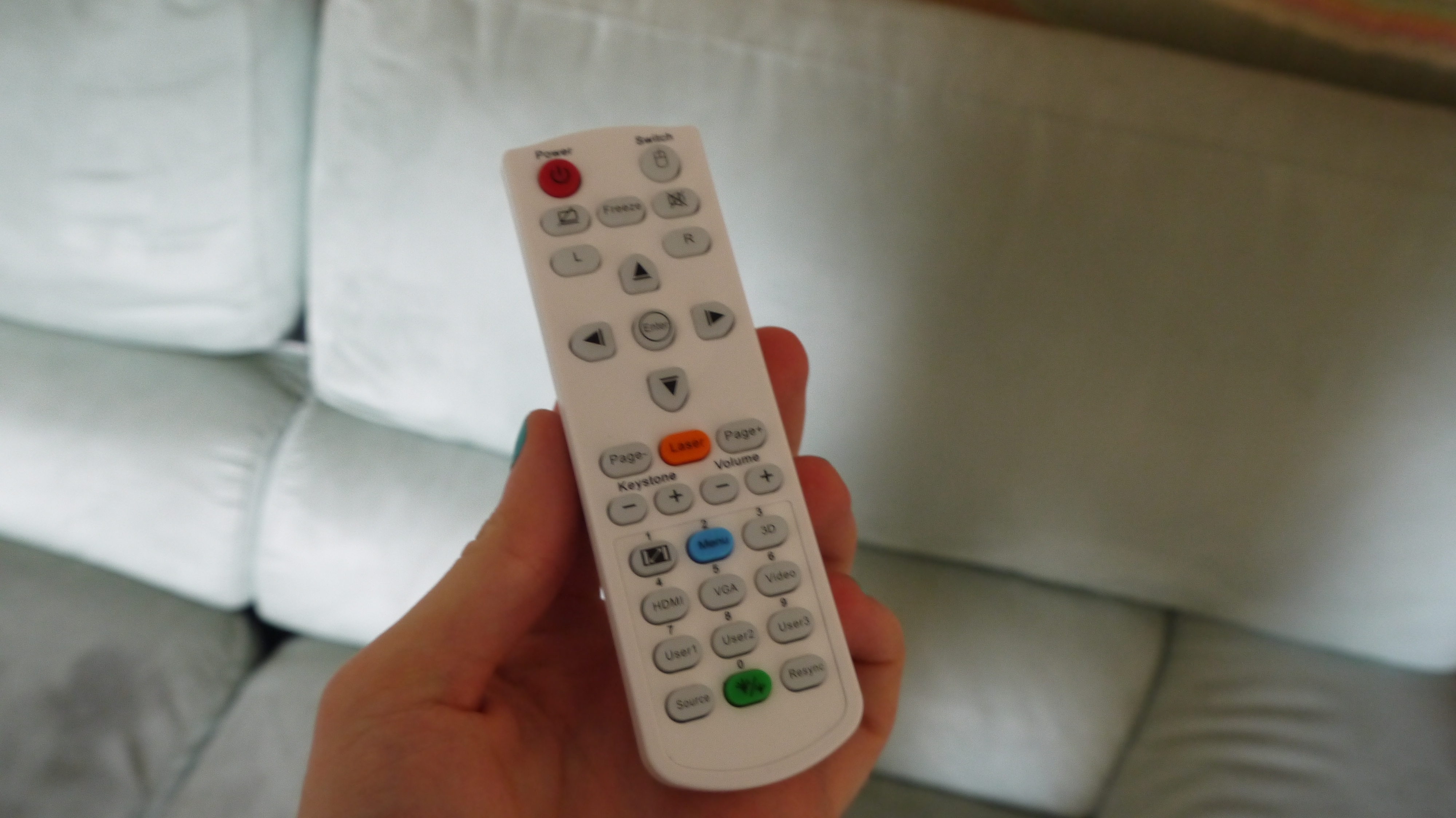TechRadar Verdict
The Optoma HD31UST is a brilliantly bright projector, capable of displaying impressive HD images even for lights-on viewing, although it can struggle with light blooming. The 100-inch projection at only 30cm distance is impressive, though the ultra short-throw lens inflates the price above what we'd hope for HD.
Pros
- +
Ultra short-throw projection
- +
TV-quality speakers
- +
Oh so bright
Cons
- -
Blooming around flames and bright light sources
- -
Can't cut down size of projection
Why you can trust TechRadar
Optoma makes top-class projectors, and at first glance the Optoma HD31UST looks like another clear winner: a bright 3,400 lumens rating, keystone correction, and ultra short-throw projection to boot.
A large part of the appeal of home projection is getting to see your favorite movies, programmes, or sports matches in a big way, and the HD31UST is able to 'throw' images onto a wall on 30cm away, with an improbably massive 100-inch projection even at that short distance.
But why would you need a short-throw projector – that is, one that can project a large image onto a screen from a much shorter distance than a long-throw model – let alone an ultra short-throw model like this one?
One of the ongoing hassles of traditional long-throw projection is needing to place your hardware at a suitable distance away from the wall to ensure a large picture; you also need to keep sight lines in mind, if you don't want people getting in and out of their seats to be blocking the projection.
So does the Optoma HD31UST deliver? We fired up the HD projector for movie night…
Price and availability
The Optoma HD31UST retails at £1,149 in the UK (around $1,449), and is available throughout Europe, the Middle East, and Africa.
That's several hundred pounds cheaper than Optoma's higher-spec ultra HD models, like the Optoma UHD51A and Optoma UHD60. So you’re getting a drop in visual quality as a trade-off for that lower price, but most currently-available TV and film content is in HD/SDR, rather than UHD, and the HD31UST will be fully capable of displaying it at maximum quality.
Sign up for breaking news, reviews, opinion, top tech deals, and more.
The equivalent short-throw model in the US is the GT5600, though it comes with a slightly brighter 3,600 lumens rating.

Design
The Optoma HD31UST sports a curiously wavy shape, with attractive curves rather than the flat box-like shape you might expect. The projector lens emits light from the rear end of the unit, rather than the front, which allows the bulk of the kit to be positioned a bit closer to the wall when in use.
At 343 x 383 x 112mm and 3.9kg the HD31UST is relatively bulky, but it carries that bulk well. The finish is a crisp white, so while it won’t fade into the shadows during a late-night screening, it blends in nicely as home furnishing – this isn’t a piece of kit you’ll be rushing to hide away when the guests arrive. In a nice touch, the projector’s remote takes the same wavy outline for its underside.
The remote comes with directional buttons and a home menu button, and can mute, switch between inputs – HDMI, VGA, USB – freeze the video feed, or kill the screen entirely; most of these buttons appear on the body of the projector too. There’s also a handy built-in laser pointer, if you’re using the projector for more presentational or educational purposes.
There are plenty of ports, with HDMI 2.0, VGA, USB, ethernet and an audio output for connecting to an external hi-fi system or speaker. It’s easy to hook up an Amazon Fire TV streaming stick, or connect via HDMI to your games console, and switch the source via the remote. The projector is also compatible with 3D Blu-ray or games consoles, though you'll need the Optoma ZD302 3D glasses for another £43.99 (around $55).

While you might think a short-throw projector would pack in slightly smaller-scale, cheaper tech, the opposite is usually true.
The type of lens required for a short-throw projector requires a higher-quality grade of glass, for one – it needs to do a lot more refraction of light in order to get a sizable image at such a short distance. The Optoma HD31UST only needs around 30cm breathing space from a wall or projector screen to display in 100 inches, and it’s working hard to achieve that.
Performance
The Optoma HD31UST’s performance depends as much on the space you’re using it in as the capabilities of the projector itself.
The HD31UST offers a capable HD picture, without auto vertical correction, and manual geometric adjustment to help align the image even on uneven surfaces.
While you’ll ideally be projecting onto a blank white wall, so as to minimize interference with the picture, the HD31UST’s picture settings allow you to add a subtle filter to help to counteract the color of your wallpaper.
When watching the atmospheric Netflix Original thriller Dark we found colors rich and accurate, while the blue tint of our living room wall was easily corrected for.
This is an HD projector, though, rather than a 4K model or anything with HDR (high dynamic range). It isn’t likely to satisfy those after a truly high-fidelity images, and only really offers a home cinema experience in terms of size. The short-throw lens also means you can’t go much smaller than 100 inches in terms of wall space, making use of the HD31UST somewhat inflexible.yeas

Optoma’s projector can deliver an impressive 3,400 lumens, making it wonderfully bright, and more than capable of bringing out that extra level of visual detail during light-on viewing – although you’ll still want a darkened room to make the most of the image.
You’ll get 4,000 hours of lamp life out of the default ‘Bright’ mode, though that can easily extend to 10,000 and 15,000 hours with the energy-saving Eco and Eco+ modes, or 12,000 hours at a ‘Dynamic’ setting that tries to vary brightness more intelligently, depending on what’s on the screen.
This high brightness does, however, lead to some blooming and blurred edges around light sources – experiencing such effects while watching the cast of Dark navigate a dim cavern with their flashlights was irritating, even if it didn’t render the show unwatchable.
The built-in 16W speakers are a particularly welcome addition, as their output is about the equivalent of the mid-range TV you’d likely be replacing with this projector. By contrast, the higher-end Optoma UHD51A and Optoma UHD60 pack in only 5W and 8W respectively.
It’s not going to stand in for a dedicated hi-fi system, but we had no trouble picking up either high-frequency dialogue or more rumbling sound effects.

- Enhance your home cinema setup with the best soundbars for films, music, and TV
Our verdict
The Optoma HD31UST manages to couple ultra-short throw projection with an immensely bright image and thoughtfully designed hardware. For enthusiastic hosts with a lot of wall, and not much square footage, this short-throw projector could be ideal for watching home movies, streaming sports broadcasts, or gaming in a big way.
However, the 1080p resolution won’t impress everyone. As a projector best suited to the home, the HD31UST also faces some stiff competition from an equivalently-priced television.
For a similar price tag you could get all manner of high-quality UHD TVs, rather than making do with the HD31UST’s humble 1080p resolution. Having a compact projector may work better for your living room, though, and you'd realistically be looking at a good 55-inch TV – say an entry-level OLED like the LG B7 – rather than anything approaching 100 inches.
And if you can stretch to few hundred pounds/dollars more you could also opt for the 4K and Alexa-enabled long-throw Optoma UHD51A instead.
As a capable, ultra short-throw projector delivering incredible brightness, though, the HD31UST still delivers for the money.
- Check out the 10 best home cinema projectors in 2018

Henry is a freelance technology journalist, and former News & Features Editor for TechRadar, where he specialized in home entertainment gadgets such as TVs, projectors, soundbars, and smart speakers. Other bylines include Edge, T3, iMore, GamesRadar, NBC News, Healthline, and The Times.
